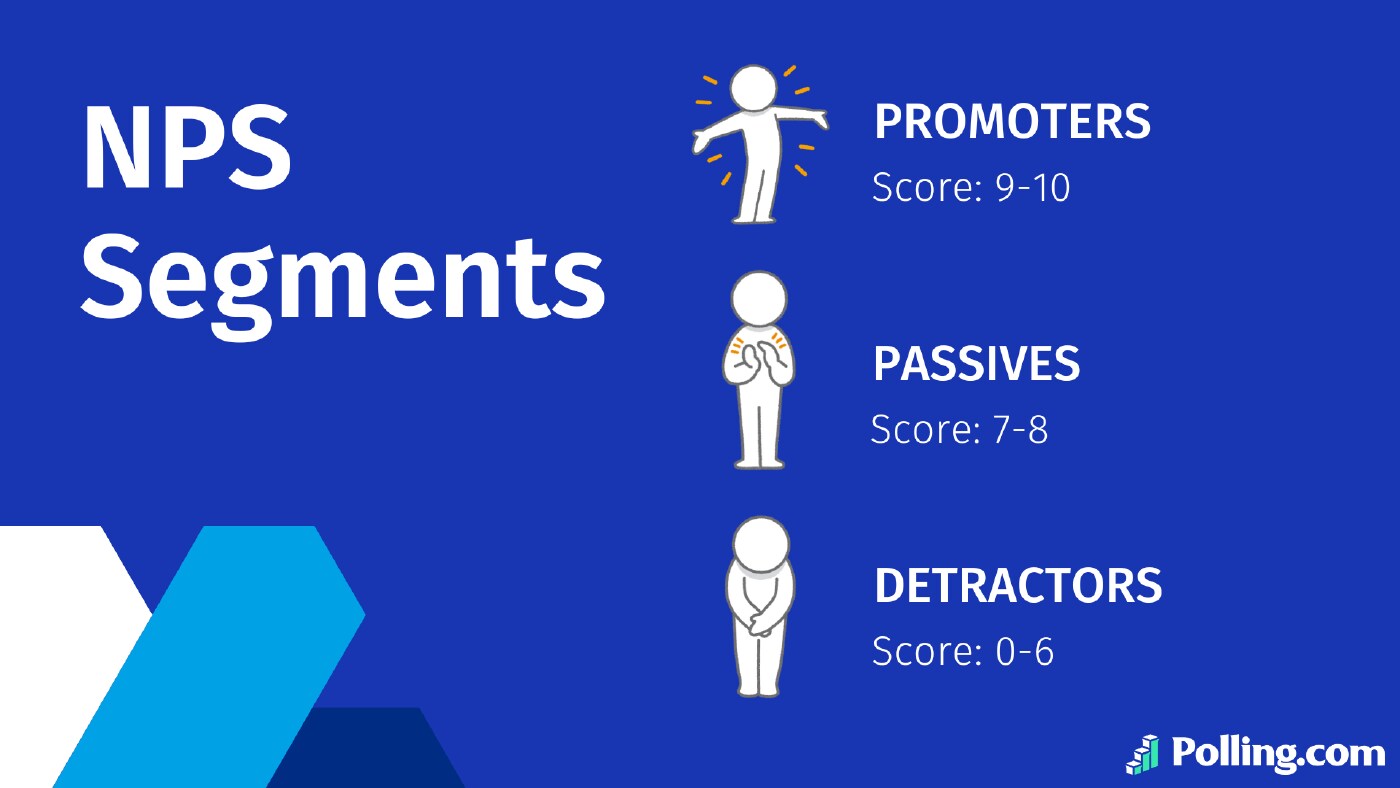
Promoters, Passives, and Detractors: Key Players in Your NPS Strategy
Are you familiar with the concept of promoter, passive and detractor? Understanding the Net Promoter Score (NPS) is crucial for any business aiming to gauge and improve customer satisfaction and loyalty as part of the overall customer journey.
NPS is a powerful tool that segments customers into three NPS categories based on their likelihood to recommend a business to a friend or colleague: Promoters, Passives, and Detractors. It measures customer loyalty while also providing actionable insights to address issues raised by unhappy customers.
When used effectively, Net Promoter Score surveys can highlight areas needing improvement in customer support or reveal opportunities for leveraging positive feedback on social media to enhance brand reputation.
What does NPS stand for?
NPS stands for Net Promoter Score, a metric used to assess customer loyalty and satisfaction with a single question: “On a scale from 0 to 10, how likely are you to recommend our business to a friend?” Based on their responses, customers are categorized into Promoters (9-10), Passives (7-8), and Detractors (0-6).
NPS is calculated by subtracting Detractors from Promoters. This shows customer sentiment and loyalty clearly.
NPS Categories: Promoters, Passives, and Detractors
Promoters are your biggest advocates, scoring 9-10 on the NPS scale. They are highly satisfied, loyal customers who are likely to recommend your business and drive growth through positive word-of-mouth. Detractors, who score 0–6, are dissatisfied customers. They may damage your reputation through negative feedback or reviews. Detractors are a critical segment to focus on, as their concerns, if unresolved, can significantly impact your brand’s perception.
This classification helps businesses identify areas for improvement and leverage customer feedback to foster growth and loyalty.
Understanding NPS Categories
| NPS Segments | Identification and Characteristics | Engagement/Conversion/Mitigation Strategies |
|---|---|---|
| NPS Promoters | – Brand advocates who score 9 or 10 on the NPS survey – Enthusiastic about the brand – Likely to recommend the product or service to others – Less price-sensitive – More forgiving of minor issues – Contribute to positive word-of-mouth | – Recognize and reward loyalty – Offer exclusive deals – Provide early access to new products – Engage in co-creation initiatives – Maintain regular communication to reinforce positive perception and loyalty |
| NPS Passives | – Offer scores of 7 or 8 on the NPS survey – Satisfied but lack strong loyalty – Could switch to a competitor easily – Have had good experiences but not emotionally connected enough to advocate for the brand | – Elevate their experience to turn them into Promoters – Understand their needs and expectations through targeted follow-up questions – Offer personalized experiences – Improve product or service features based on feedback – Engage them with more meaningful brand interactions |
| NPS Detractors | – Dissatisfied customers scoring between 0 and 6 on the NPS survey – Pose a risk of negative word-of-mouth – Can damage brand reputation – Often vocal about dissatisfaction – Stemming from unmet expectations or negative experiences | – Address concerns promptly and empathetically – Understand grievances and offer resolutions or compensations – Implement changes to prevent future dissatisfaction – Exceed expectations to rebuild trust and transform into neutral or positive advocates |
Promoters and Detractors: Why They Matter
Promoters are invaluable to your business as they actively recommend your products or services, driving organic growth. Detractors, on the other hand, pose a serious risk. Their negative experiences could result in damaging reviews or spreading dissatisfaction, which can deter potential customers. It’s essential to convert Detractors into Promoters by understanding their pain points and addressing their concerns directly.
Detractors provide businesses with the opportunity to improve. By focusing on their feedback, you can uncover operational weaknesses or product flaws that may not be visible through positive feedback alone. Turning Detractors into Promoters should be a top priority, as this shift not only boosts your NPS but also strengthens your customer base.
Collecting and Analyzing NPS Feedback

Now that we know the segments and importance of NPS, it’s crucial to emphasize the significance of collecting and analyzing NPS data effectively. While NPS surveys efficiently classify respondents into distinct categories based on their scores, it’s the open-ended follow-up questions that unveil invaluable insights into individual concerns and expectations.
Promoters’ feedback helps identify what your business is doing well, while Detractors’ feedback highlights areas that require urgent attention. The qualitative feedback obtained from these open-ended questions is indispensable for crafting tailored strategies aimed at enhancing the overall customer experience and elevating NPS scores.
Through a thorough understanding and proactive response to feedback from each NPS category, businesses can drive focused enhancements, cultivate stronger customer relationships, and optimize business performance. Promoters and Detractors, in particular, present unique opportunities to glean insights and fortify the foundation for sustained success.
Feedback to Action – Enhancing Customer Experience
Once you’ve collected and analyzed the qualitative feedback from your NPS surveys, the next crucial step is translating these insights into actionable strategies. Here’s how you can effectively bridge the gap between feedback and action:
- Identify Common Themes: Look for recurring themes or issues within the feedback. By identifying commonalities, you can prioritize areas for improvement that will have the greatest impact on customer satisfaction.
- Prioritize Feedback: Not all feedback will carry the same weight. Focus on feedback that aligns with your business objectives and has the potential to drive significant improvements in NPS scores.
- Create Actionable Goals: Translate feedback into specific, measurable goals to address the concerns of both Promoters and Detractors.
- Collaborate Across Departments: Improvement initiatives often require collaboration across various departments. Involve relevant teams such as customer service, product development, and marketing to ensure a holistic approach to addressing feedback.
- Implement Changes Incrementally: Rather than attempting to address all feedback at once, prioritize changes and implement them incrementally. This allows for better control over the process and minimizes disruptions to operations.
- Communicate Changes to Customers: Keep customers informed about the changes you’re implementing based on their feedback. Transparency builds trust and demonstrates your commitment to continuously improving the customer experience.
- Monitor and Adjust: Continuously monitor the impact of your actions on NPS scores and customer satisfaction metrics. Be prepared to adjust strategies based on evolving feedback and changing market dynamics.
By following these strategies, you can effectively translate feedback into meaningful action, driving tangible improvements in NPS scores and overall, enhancing customer satisfaction.
Conclusion
In summary, NPS categories – detractors passives and promoters – provide valuable insights for businesses to enhance customer experience and loyalty. Focusing on both Promoters and Detractors allows businesses to strengthen their offerings, retain satisfied customers, and convert dissatisfied ones into loyal advocates.
By leveraging qualitative feedback from Detractors, businesses can make the necessary improvements to sustain growth in today’s dynamic market. This customer-centric approach not only drives satisfaction but also sustains long-term success.
